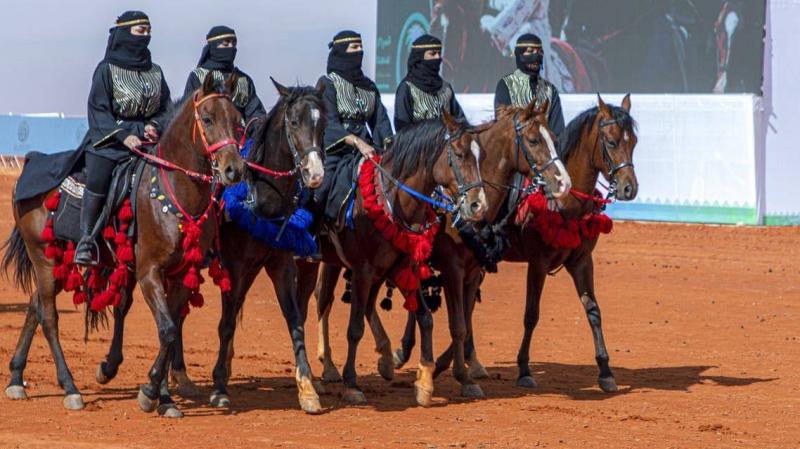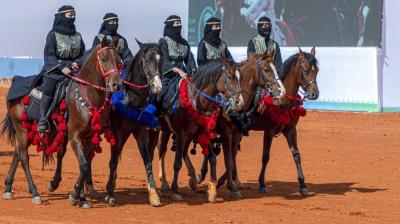In a significant first for Saudi Arabia, the King Abdulaziz Camel Festival featured a historic participation of women, showcasing the inaugural women's race as part of the festival's events. The festival hosted a women's individual race for the Al-Maghatir camels in all their colors, where participants competed for top positions to make their names known in this groundbreaking female-only camel race.
The capital of Saudi Arabia, Riyadh, is home to the largest festival of its kind in the world, dedicated to camels and their beauty markings. It attracts prominent owners from Saudi Arabia, the Gulf states, and other Arab countries, along with participants from countries such as the United States, Russia, and France, with an estimated 33,000 camels participating in the festival.
On Saturday, the female participants entered the newly introduced open women's race as part of the sixth edition of the King Abdulaziz Camel Festival held in the Al-Syahid region. There were 38 entries in the individual Al-Maghatir category for women. The competitors showcased their camels in front of the final judging committee and the audience to determine the winners, with 10 participants advancing to the judging phase and ultimately five securing the top positions.
According to "Al Arabiya.net," the goal of women's participation in the festival was to promote the concept of Saudi women's involvement while wearing traditional attire. The event provided competitive challenges among participants and empowered women to compete for prizes such as the King's Sword, the Founder’s Flag, the Club's Cup, and the Elite’s Elite award. The judging criteria were unique, focusing on beauty standards that did not necessarily involve strong physical attributes.
Various activities accompanied the festival, emphasizing women's traditional attire, and inviting groups interested in cultural heritage. The grand festival, spanning an area of 32 square kilometers and located approximately 100 kilometers northeast of Riyadh, offers a range of entertainment and cultural events, making it a global carnival. It employs around 5,000 individuals and attracts tourists worldwide, with daily visits exceeding 100,000.
Moreover, the King Abdulaziz Camel Festival generates significant economic activity through its local markets, showcasing products from productive families, alongside the region's largest camel sale and purchase market, with transactions reaching nearly three billion riyals. The festival also highlights cultural aspects rooted in artistic and human heritage through poetry, theater, singing, and entertainment activities catering to all age groups.




